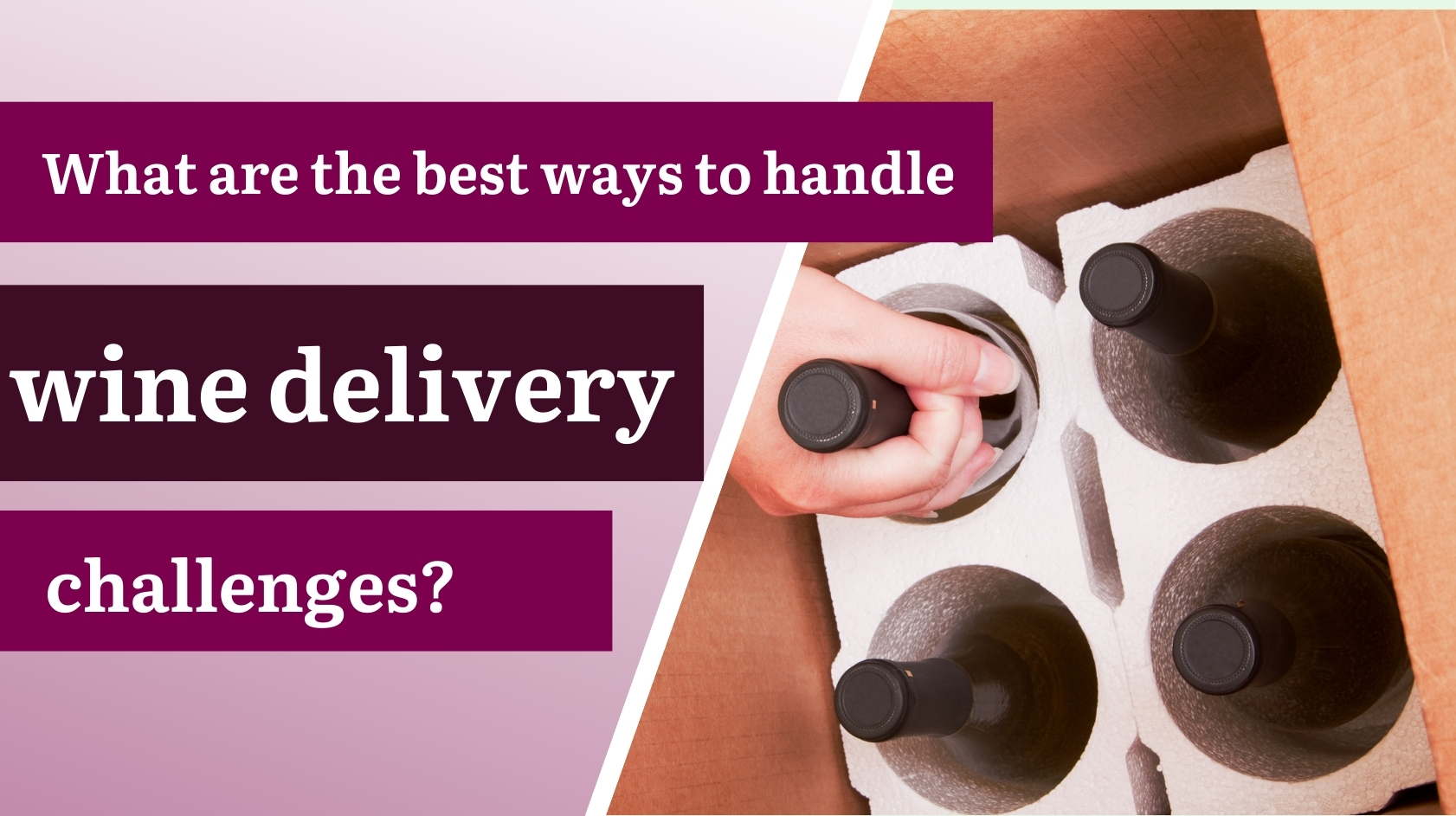How to Solve the Biggest Wine Delivery Problems?

Why Wine Delivery Needs Extra Care?
Shipping wine isn’t as easy as shipping clothes or books. Wine is fragile, sensitive to temperature, and highly regulated. If not handled correctly, bottles can break, labels can peel, and the wine inside can get ruined by heat or cold.
On top of that, rules about who can receive wine and how it must be shipped make things more complex. If these problems aren’t solved, wineries risk high costs, unhappy customers, and missed sales.
Let’s go over the most common wine delivery challenges—and simple ways wineries can fix them.
Use Proper Packaging to Prevent Damage
The first step in safe wine delivery is choosing the right packaging. A box that’s too big or too small can cause bottles to move around and break.
Here’s how to protect wine during shipping:
Use foam inserts or cardboard dividers to stop bottles from bumping into each other.
Add thermal liners or insulation to control temperature swings.
Try heat-resistant and shock-absorbing packaging, especially during hot or cold weather.
Choose eco-friendly materials that are recyclable or compostable to meet customer expectations for sustainability.
Some wineries are even trying flat wine bottles. These fit through mail slots and need less packaging, cutting down on damage and costs.
Control Temperature to Protect Wine Quality
Wine doesn’t like it too hot or too cold. During shipping, the temperature can swing quickly—especially in summer or winter. That’s why using the right temperature protection is so important.
Here’s what works:
Use insulated kits that keep wine cool for up to 48 hours.
For hot weather, include ice packs or use temperature-controlled vans.
In cold weather, add heat packs and insulated pouches to prevent freezing.
Use temperature trackers to monitor the journey. If something goes wrong, you’ll know in time to fix it.
Keeping wine at the right temperature makes sure it tastes just like it should when it reaches your customer.
Choose the Right Carrier and Follow the Rules
Not all shipping companies handle wine. In fact, USPS can’t ship wine at all. Wineries must use carriers like UPS or FedEx—but only if they’re licensed and approved.
Here’s what you need:
A shipping agreement with the carrier.
Proof of your alcohol shipping license.
Special labels and packaging that follow carrier rules.
Adult signature at delivery to verify age.
These steps can add time and cost, but they’re necessary to follow the law and make sure your wine gets delivered safely and legally.
Keep Customers Informed with Clear Communication
Many customers leave websites without buying wine because of unclear shipping rules or high surprise fees. A big part of solving wine delivery problems is being upfront.
Here’s how to do that:
Show a shipping map that lists where you deliver and how long it takes.
Display shipping costs and delivery times clearly at checkout.
Send tracking updates so customers know when their wine is arriving.
Post answers to common questions in a simple FAQ section.
Good communication reduces cart abandonment and builds trust with your customers.
Protect Every Order with Insurance and Return Options
Shipping wine is risky. Even with good packaging and carriers, breakage or spoilage can still happen. That’s why insurance matters.
Here’s what to offer:
Add delivery insurance that covers lost or damaged bottles.
Give customers a fair return policy. For example, full refunds within 72 hours of receiving a damaged or spoiled shipment.
Include return and cancellation info in order emails and on your site.
When people know they’re protected, they’re more likely to buy again and recommend your winery to others.
Go Green with Sustainable Packaging
More customers today care about the environment. Wineries can stand out by using earth-friendly packaging that’s safe and stylish.
Here are some ideas:
Use recycled paper or compostable foam.
Try reusable thermal liners that can be sent back or used again.
Switch to flat wine bottles that use less space and reduce carbon emissions.
Packaging and shipping make up over half of a wine’s carbon footprint. Sustainable shipping shows your winery cares about quality—and the planet.










